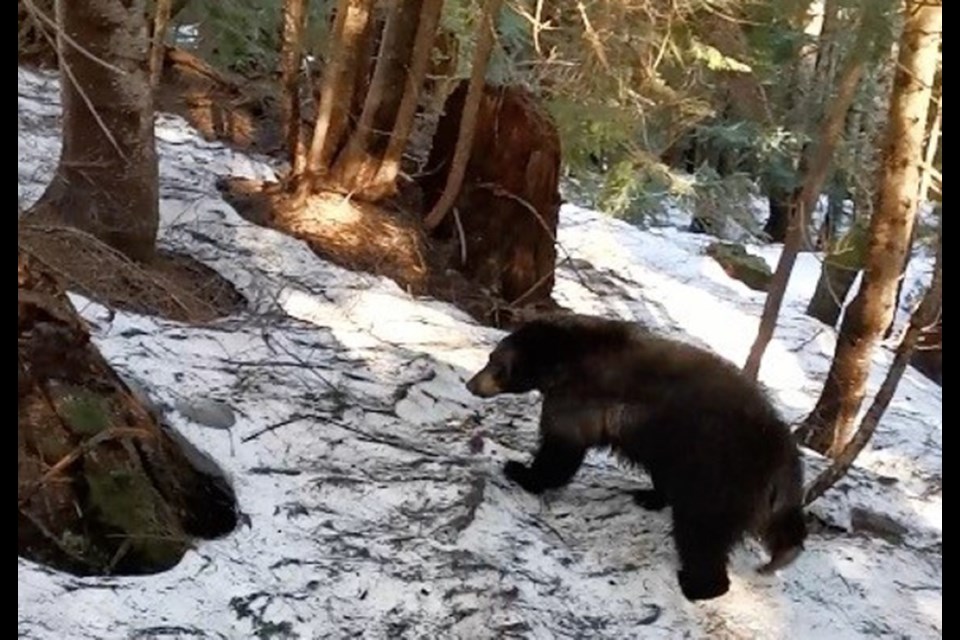It's unlikely the bear that followed a trail runner in Cypress Provincial Park earlier this month is aggressive, according to bear behaviour expert Ellie Lamb. There are several other reasons a bear would follow.
Being constantly bombarded by people in feeding areas during their hyperphasia period – when they fatten up before winter – can be stressful for bears, so they may prefer to move people out by chasing them.
"But that doesn't mean they're going to do anything [aggressive]," Lamb said. "Seldom is it more territorial, but it can be commonly play and curiosity, and young bears that haven't learned spatial respect."
If a bear is following you in the wild, here's what Lamb says you should do:
- You will not outrun a bear. Stop.
- Take your bear spray out.
- Turn to face the bear.
- In a loud voice, say, "Hey. Back off."
- Take one or two steps toward the bear, with the bear spray ready to deploy.
- If the bear moves any closer toward you, deploy the bear spray.
- Once the bear has moved on, you can continue as you were.
The spray can travel 10 to 15 metres, and comes out at around 75 miles an hour, so it will likely beat most winds. Lamb said you don't have to empty the can. Often the sound of spray being deployed is enough to scare off a bear.
If you don't have bear spray, Lamb suggests asserting the same dominance and throwing a fistful of small rocks in its face instead. A hiking pole can also be used as a tool to fend a bear off that gets too close: push it against its chest and tell it, "No."
Lamb said the same advice applies for both black and grizzly bears.
"What we need to do is teach the bear how we need them to behave for co-existence," she said. "Clearly, on the North Shore we need to coexist with these animals and get along, and they want to get along.
"It's not that they're trying to be bad," she added. "Primarily, they're young bears that haven't been taught."
Lamb said letting bears chase you sends the wrong message, and can actually create bad behaviour that leads to problems down the road if they become too pushy to co-exist with humans, like .
The narrative that bears are born fearful and need to stay fearful is false, she said. "We need to set down boundaries and parameters. They have that in nature."
This sort of action on the part of the public is part of a larger decision that society makes.
"We need to say that we want to live in peace with bears, ," Lamb said.
This article has been updated with additional advice from bear expert Ellie Lamb.




